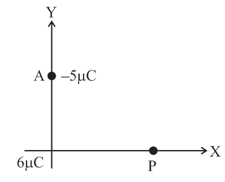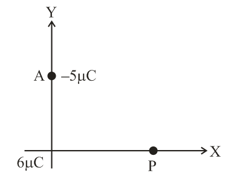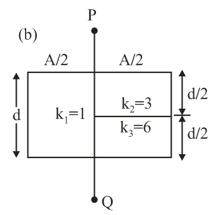Maharashtra Board Solutions for Chapter: Electrostatics, Exercise 3: Exercises
Maharashtra Board Physics Solutions for Exercise - Maharashtra Board Solutions for Chapter: Electrostatics, Exercise 3: Exercises
Attempt the practice questions on Chapter 8: Electrostatics, Exercise 3: Exercises with hints and solutions to strengthen your understanding. Physics Standard 12 solutions are prepared by Experienced Embibe Experts.
Questions from Maharashtra Board Solutions for Chapter: Electrostatics, Exercise 3: Exercises with Hints & Solutions
Three charges and are placed at equal distances on a straight line. If the potential energy of the system of these charges is zero, then what is the ratio ?
The dipole moment of a water molecule is . A sample of water contains molecules, whose dipole moments are all oriented in an electric field of strength . Calculate the work to be done to rotate the dipoles from their initial orientation to one in which all the dipoles are perpendicular to the field,
A charge is placed at the origin and another charge is placed on the y axis at a position .

Calculate the total electric potential at the point P whose coordinates are
A charge is placed at the origin and another charge is placed on the y axis at a position .

Calculate the work done to bring a proton from infinity to the point . What is the significance of the sign of the work done ?
In a parallel plate capacitor with air between the plates, each plate has an area of and the separation between the plates is .
Calculate the capacitance of the capacitor,
In a parallel plate capacitor with air between the plates, each plate has an area of and the separation between the plates is .
If this capacitor is connected to supply, what would be the charge on each plate?
In a parallel plate capacitor with air between the plates, each plate has an area of and the separation between the plates is .
How would charge on the plates be affected if a thick mica sheet of is inserted between the plates while the voltage supply remains connected?
Find the equivalent capacitance between and . Given, area of each plate and separation between plates .


